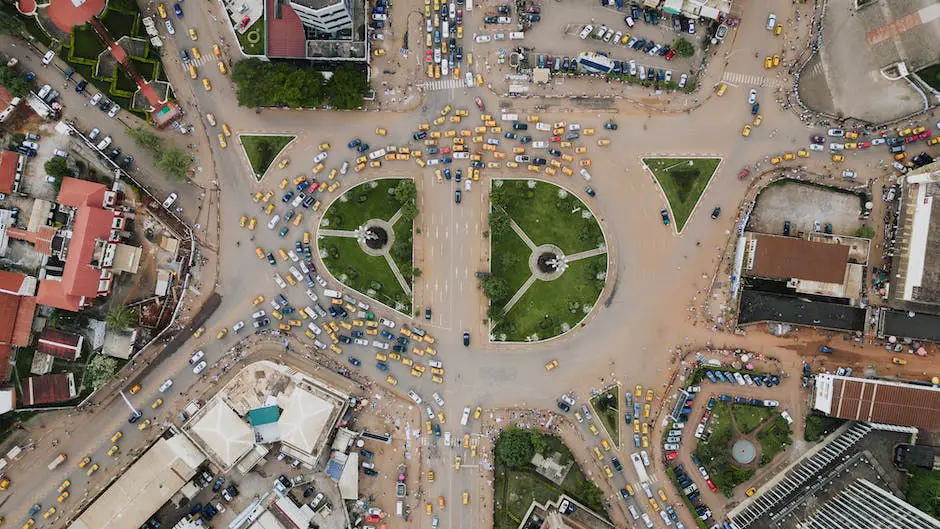
Nestled in the heart of Cameroon, Yaoundé is a city where the whispers of the past meet the innovations of the present. Its architecture tells a story of cultural fusion, colonial legacies, and a forward-looking spirit. As I stroll through the bustling streets, I can’t help but marvel at the eclectic mix of structures that make up the city’s skyline. From traditional palatial compounds to modern high-rises, Yaoundé’s architecture is a testament to the city’s evolution.
The Roots of Yaoundé’s Architectural Identity
Yaoundé’s architectural journey began with indigenous designs. The early structures were predominantly huts made from natural materials like wood, leaves, and mud. These were not just shelters but symbols of communal living and tribal identity. The designs were practical, suited to the climate, and reflected the social hierarchy within communities.
Colonial influence in the 19th and 20th centuries introduced European styles. The Germans, followed by the French, left their mark with administrative buildings, churches, and schools. These structures stood out for their sturdiness, use of imported materials, and foreign design principles. They were a stark contrast to the indigenous architecture and symbolized power and control.
Post-Independence: A Blend of Old and New
After independence in 1960, Yaoundé began to carve out a new architectural identity. The city saw a blend of the old and the new. Traditional motifs started appearing on modern buildings, creating a unique fusion. This period also saw the rise of Cameroonian architects who were eager to express national pride through their designs.
Government buildings and monuments became grander, showcasing the aspirations of a young nation. The Palais de Congrès and the Prime Minister’s office are prime examples of this era, combining modernist lines with local artistry.
Contemporary Yaoundé: A City Looking Forward
Today, Yaoundé is embracing contemporary architecture with open arms. The city is home to sleek glass towers that reflect its growing economic status. These modern edifices are energy-efficient and designed with an eye on sustainability. They stand as symbols of Yaoundé’s ambition and its readiness to join the ranks of global cities.
Yet, amidst this modernity, traditional architecture still has its place. The city’s cultural heritage is preserved in buildings like the National Museum, which houses artifacts within its historically resonant walls.
Challenges and Triumphs in Preservation and Innovation
Yaoundé’s architectural evolution hasn’t been without its challenges. Rapid urbanization has put pressure on infrastructure and raised concerns about preserving historical sites. Yet, the city has managed to find a balance between development and conservation, ensuring that its architectural heritage is not lost to time.
Initiatives to restore and repurpose old buildings have been successful in keeping the city’s history alive. At the same time, new construction adheres to international standards, often incorporating green spaces and community areas to enhance urban living.
Yaoundé’s Architecture: A Reflection of Its People
The architecture of Yaoundé is more than just a collection of buildings; it’s a reflection of its people’s resilience, creativity, and hope. Each structure tells a story of the city’s past struggles and future dreams. It’s a living museum where every corner holds a piece of history, and every new building is a canvas for innovation.
As I wander through Yaoundé, I’m struck by the harmony between the old and the new. It’s a city that respects its roots while eagerly reaching for the stars. The architecture here isn’t just about aesthetics; it’s about identity and progress.
FAQs About Yaoundé’s Architecture
- What are some iconic examples of traditional architecture in Yaoundé?
Traditional architecture in Yaoundé includes the ancient palatial compounds of the local chiefs, which feature intricate wood carvings and thatched roofs. These compounds are often circular in layout, symbolizing Unity and community.
- How did colonialism impact the architecture of Yaoundé?
Colonialism introduced European architectural styles to Yaoundé, resulting in buildings with more durable materials like stone and concrete. These structures often served administrative and religious purposes, reflecting the colonial powers’ influence.
- Are there any efforts to preserve Yaoundé’s historical architecture?
Yes, there are efforts to preserve Yaoundé’s historical architecture. This includes initiatives to restore and maintain colonial-era buildings and to integrate traditional design elements into new constructions.
Conclusion
In conclusion, Yaoundé’s architecture is a rich tapestry woven from the threads of history, culture, and modernity. From the earthy tones of traditional huts to the gleaming facades of contemporary skyscrapers, the city’s buildings are chapters in an ongoing story. They chronicle the evolution of a nation and its people, standing as monuments to where Cameroon has been and where it’s headed.
Yaoundé’s architecture is not just about structures; it’s about the soul of the city. It’s a physical narrative that continues to evolve, reflecting the dynamism and diversity of its inhabitants. For anyone keen on understanding Cameroon’s heart, a look at Yaoundé’s skyline is a great place to start.
As the city grows, so does its architectural legacy, ensuring that Yaoundé will remain a fascinating subject for years to come. Whether you’re an investor, a homeowner, or simply a lover of urban landscapes, Yaoundé’s architecture is a testament to human ingenuity and the enduring spirit of a community that’s always on the move.